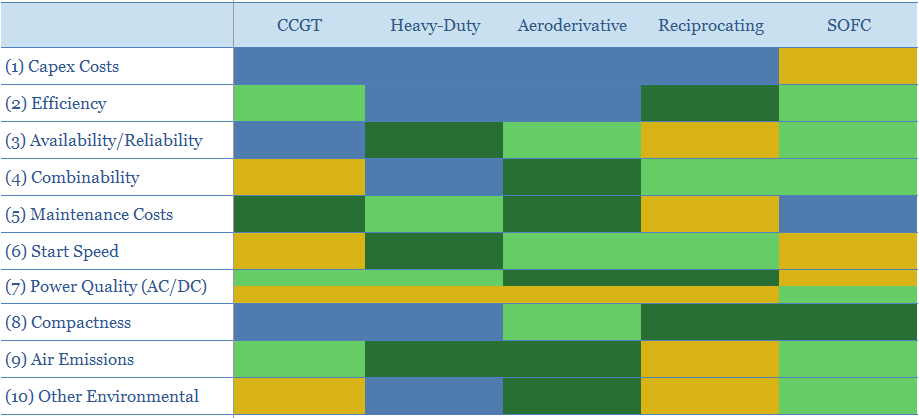This 17-page report compares combined cycle gas turbines (CCGTs), heavy-duty gas turbines, aeroderivative gas turbines, reciprocating engines and solid oxide fuel cells (SOFCs), on ten dimensions. No one gas generation technology is best. But modular solutions may increasingly rival CCGTs, especially for energizing AI data-centers?
In The (US) Office, Season 3, Episode 20, Jim Halpert attempts to wind up his colleague Dwight Schrute, by imitating him. Jim – “Question, what kind of bear is best”. Dwight – “That’s a ridiculous question”. Jim – “False, Black bear”. Dwight “Well, that’s debatable. There are basically two schools of thought”. Jim “Fact: Bears Eat Beets. Bears, Beets, Battlestar Galactica”. Dwight – “What is going on here?”.
This exchange mocks the strange fascination some people have, for ranking different exemplars within a category. Polar bears are obviously better adapted to the tundra, koalas to the outback, Yogi to swiping pic’nic baskets. A good zoologist is not one that can force-rank the bears, but one that can simply describe their differences.
Our goal in this note is to be good zoologists, in the context of gas generation, which has the lowest LCOE for new round-the-clock electricity, hence as part of global electricity demand growth, will see capacity additions rise by 2.5x through 2030 (see page 6).
Perhaps in the past, large combined cycle gas turbines have been placed on a pedestal as the “best” form of gas generation. In this note, we profile five gas-fueled alternatives.
The five different types of gas power generation are combined cycle gas turbines (CCGTs), heavy-duty gas turbines, aeroderivative gas turbines, reciprocating engines and solid oxide fuel cells (SOFCs). We go back to first principles, to profile each technology, and how it works on pages 2-5.
Over the remainder of the note, we compare our five different types of gas power generation across ten different dimensions: capex costs (page 7), efficiency (page 8), availability and reliability (page 9), modular scalability (page 10), maintenance costs (page 11), start speeds and ramp rates (page 12). power quality issues such as inertia, reactive power and harmonics (page 13), compactness and space requirements (page 14), emissions to air of CO2, NOx, SOx, CO and particulates (page 15) and other environmental issues such as noise and water usage (page 16).
Typical values for each of these categories are averaged together from the disclosures of public companies, and from technical papers, and available in our data-file covering the operating parameters of gas generators.
Modularity stands out as an increasingly important dimension, as large generators achieve poor performance at part load (page 7) and require costly back-ups for high availability (page 9). Our conclusions about the future split of gas-fired generation are on page 17.
